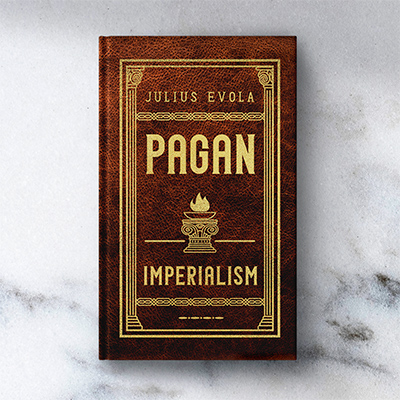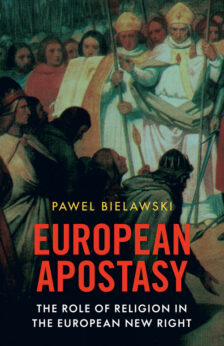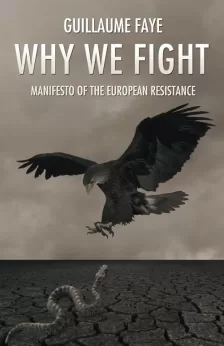Andrei Rublev (1966) is a classic historical drama directed by the great Soviet filmmaker Andrei Tarkovsky. The film is set in medieval Russia during a period of political and religious upheaval, and centers around Andrei Rublev, a real-life fifteenth-century icon painter. Rublev was a monk and a devout Christian who suffered numerous hardships and struggles throughout his life. He witnessed the fall of the Byzantine Empire and lived during a period of enormous destruction in Russia when entire villages and cities were burned to the ground, and thousands of people were slain or enslaved. These events occurred when the Golden Horde, a Tatar-Mongol empire, attacked and conquered several territories, forming a khanate in what is now known as southern and central Russia and parts of modern-day Ukraine and Kazakhstan.
Notwithstanding these obstacles, Rublev’s artistic legacy has remained. He is widely recognized as one of the best icon painters in Russian history, known for his distinct style, exquisite use of color, and ability to portray complex emotions and subjects via his art. Rublev’s impact may also be observed in Western artists such as the American painter Mark Rothko, who was strongly inspired by Rublev’s use of color and light. Rothko, noted for his enormous color field paintings, was believed to be moved by Rublev’s ability to transmit deep spirituality and passion via his art. “Their color is the color of passion,” he stated of Rublev’s symbols. “That is the hue of the passions, the color of the spirit. The color that permits us to speak with the holy.”
The film is a masterpiece that vividly depicts medieval Russian life and culture, with many scenes highlighting the period’s art, architecture, and daily life. We witness peasants farming the field, blacksmiths at work, and horses racing across the vast Russian landscape. The film depicts the protagonists as fundamentally damaged, wrestling with themes of faith, morality, and their own death.
Rublev is portrayed as a man attempting to balance his artistic ambitions with his religious devotion. Other characters in the film, such as a group of monks and a jester, are also shown to be complicated and nuanced, with their own difficulties and shortcomings. The monks are not shown as one-dimensional symbols of piety but rather as persons with their doubts and wants. For example, one of the monks, Kirill, is revealed to be obsessed with his ambition and jealousy, causing him to betray Rublev and other people in the film. Another monk, Danil, is shown as a man of strong faith who suffers from the temptation of the flesh, notably when he sees a young woman convicted of witchcraft. Meanwhile, the jester is shown as a melancholy figure. Despite his humorous antics, he is troubled by the knowledge that his people are suffering under the Tatar-Mongol yoke, and he cannot find solace in his art. The film argues that his fate reflects the broader turmoil of the time, in which even individuals who provide joy and laughter to others are eventually powerless to stop the forces of violence and devastation from tearing their world apart.
In addition to historical and cultural topics, Andrei Rublev is noted for delving into deeper philosophical concerns regarding the nature of art, spirituality, and human existence. The depiction of Rublev’s artistic problems and spiritual journey in the film highlights questions about the role of the artist in society and the relationship between art and religion. One of the film’s central philosophical topics is the idea that art can serve as a way of transcendence, allowing individuals to connect with a higher spiritual reality. This is shown by Rublev’s attempt to produce an icon that expresses the essence of Christ’s heavenly character. Rublev’s work demonstrates his desire to better grasp the spiritual realm and the secrets of existence. At the same time, the film acknowledges the inherent difficulties and limitations of artistic expression. Rublev’s attempts to make his masterwork are portrayed as a microcosm of the more considerable obstacles of attempting to convey the unfathomable and transcendent in human creation. The film implies that, while art can provide a path of transcendence and connection to the divine, it can never truly express the complexity and mystery of the human experience.
Tarkovsky masterfully uses cinematography to portray the film’s concepts and sentiments visually. The film is shot in both black-and-white and color, with each shot carefully planned and laden with symbolic meaning. The use of black-and-white cinematography, in particular, lends the film a stark and ageless appearance, underlining the historical location and the eternal character of the film’s subjects. The film’s extended takes and sluggish pacing contribute to its immersive and hypnotic appeal. Rather than focusing on short cuts and fast-paced action, Tarkovsky allows scenes to unfold at a deliberate pace, giving the spectator time to reflect on the pictures and concepts portrayed on screen. This strategy provides a sense of timelessness and immerses the audience in the film’s environment, resulting in an emotionally engaging viewing experience.
Regarding tone, Andrei Rublev is a complex and multi-layered film that defies easy description. The film is typically melancholy and meditative, with high drama and violence scattered throughout. Tarkovsky’s use of sound and music is particularly noteworthy, with moments of quiet and ambient sounds producing a sense of unease and tension. Tarkovsky was able to make a film that is both peaceful and emotionally compelling, thanks to this tonal complexity.
Tarkovsky wanted to create a sense of authenticity and historical realism, so he drew influence from medieval Russian paintings, mosaics, and church architecture. The film contains a number of arresting tableaux, which are still images that mimic holy icons. These tableaux are meticulously created and framed, with an attention to detail evocative of medieval art. Tarkovsky’s handling of color and light is also significant, as he employs a muted color palette and natural lighting to produce a heightened feeling of reality.
The film suggests that redemption is a personal journey that requires struggle, sacrifice, and spiritual growth. Rublev, for example, undergoes a spiritual crisis after witnessing the brutality and suffering of his fellow humans. He challenges his beliefs and wrestles with the idea of creating art in such a violent and unjust world. Eventually, he finds peace in the beauty of nature and the compassion of ordinary people, and he is able to reconnect with his spiritual self and create work that expresses his inner truth.
The afterlife is depicted as a continuation of one’s spiritual journey rather than a static or preset condition. The protagonists think that the afterlife is a place where the soul is free of the responsibilities of the physical world and can experience eternal serenity and beauty. Nonetheless, the film also implies that the hereafter should not be pursued at the expense of one’s present life. Instead, it may be seen in times of inspiration, compassion, and creativity in this world.
Andrei Rublev shows us that salvation and the afterlife are complicated and multifaceted notions that cannot be reduced to a simple formula or theory. These personal and subjective experiences necessitate reflection, empathy, and a connection with the spiritual side of existence.
Throughout the film, Rublev struggles to reconcile his faith with the harsh reality of the world around him. He watches the savagery of war and the corruption of the Church, and he wonders how a just God could allow such things to happen. The film’s climax, in which Rublev views a depiction of the Last Judgment, is a spectacular and lasting visual experience. The harshness and violence of the Earth are juxtaposed with the hope and promise of redemption in this tableau, as the souls of the damned are tossed into the flames, and the blessed ascend to paradise.
Finally, the film implies that the Last Judgment is a potent metaphor for the world’s conflict between good and evil. It serves as a reminder that all humans will be held accountable for their deeds and that justice will be done in the end. At the same time, the picture implies that there is hope for redemption and salvation even in a cruel and unjust world.








Somehow along the text of the article, the intuitive sense of what a state of spirituality is gets tangled in a mangrove of confusions. Rublev and Rothko?!!!Flat blankness, a spiteful void is not”spirituality” of any kind.Rothko was a con-man made to look like a “struggling genius”.Not seeing it clearly is a serious flaw in a grown-up.
[…] Quelle: https://arktos.com/2023/03/07/andrei-rublev-a-masterful-exploration-of-art-spirituality-and-medieval… […]